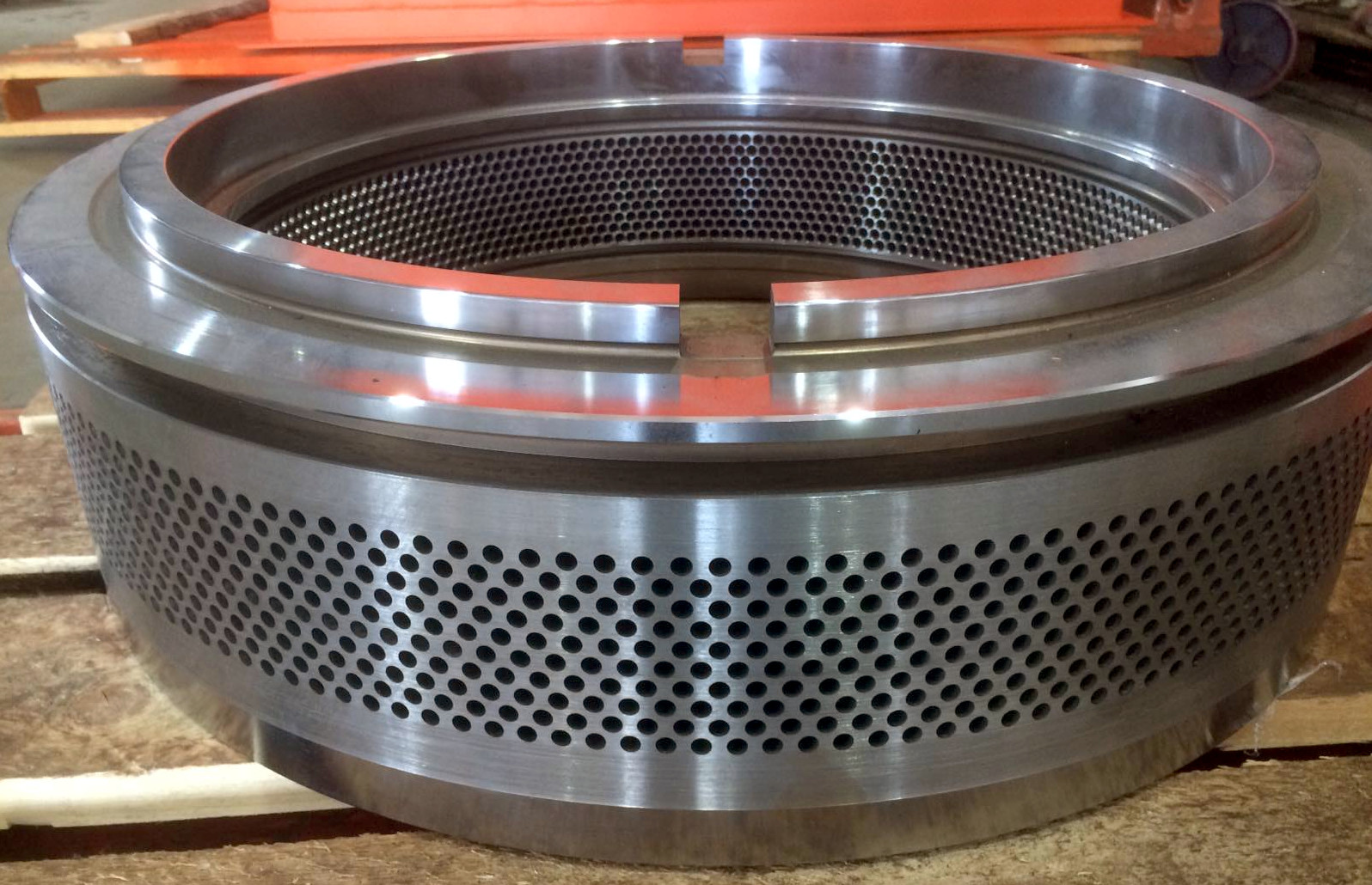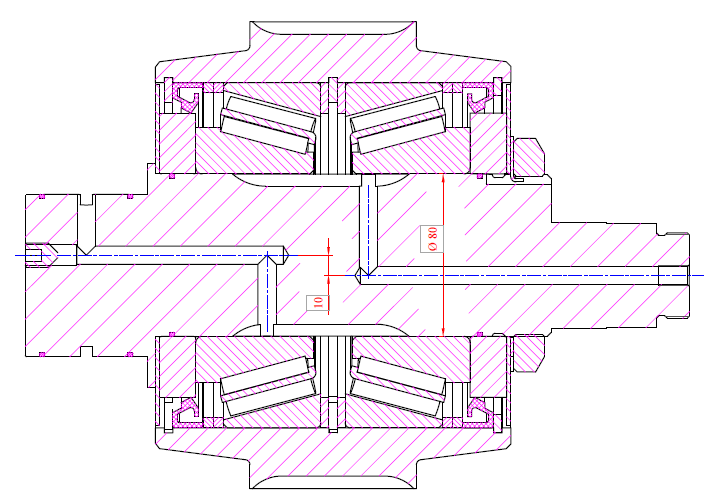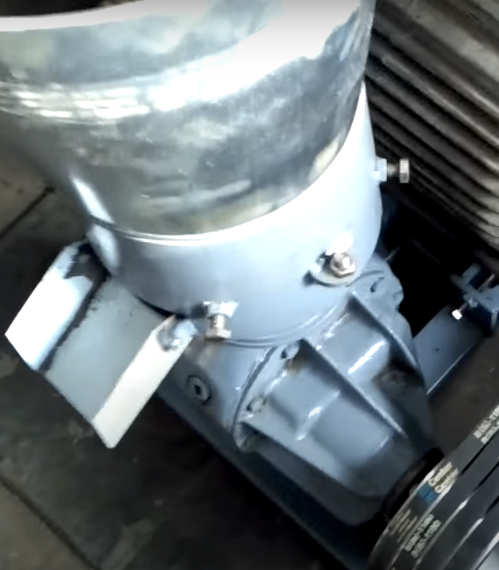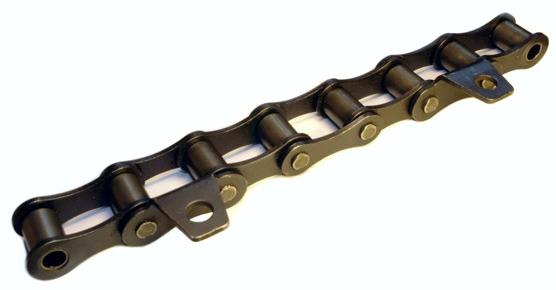A rather exotic but viable option is the hydraulic drive. A motor with a small pump drives a large pump in engine mode, achieving a significant reduction in speed and a similar increase in torque. Operation during freezing conditions and the need for highly skilled maintenance are less daunting than the cost. Compared to a gear drive, the cost of such a drive is 3-5 times higher. The most reliable are considered to be axial-piston hydraulic drives, and their pricing may become acceptable with the advancement of CNC metalworking technologies. There are two paths for developing a pellet mill based on hydraulic drive: either invent an axial-piston pump with a large enough hole in the middle to accommodate a stationary shaft, or mount the rollers on a door that retracts along guide rails on the pellet mill.
A chain drive for a pellet mill is both the most expensive and the cheapest option simultaneously. In the case of a laboratory pellet mill, which requires low productivity and occasional operation, it can be made as cheaply as possible with a chain drive in a makeshift setup. Although a toothed belt might be more applicable here. However, if the demand is for stable round-the-clock operation at power levels from 55 kW (74 hp), then the chain as a consumable will prove to be the most expensive with the shortest replacement interval.







